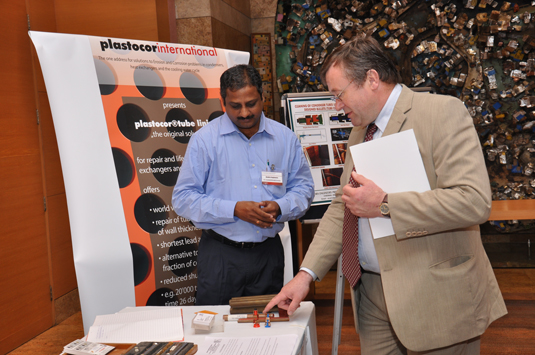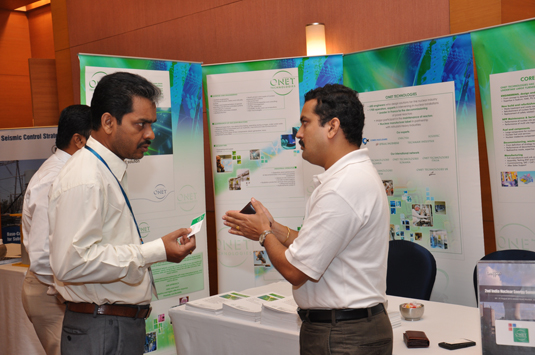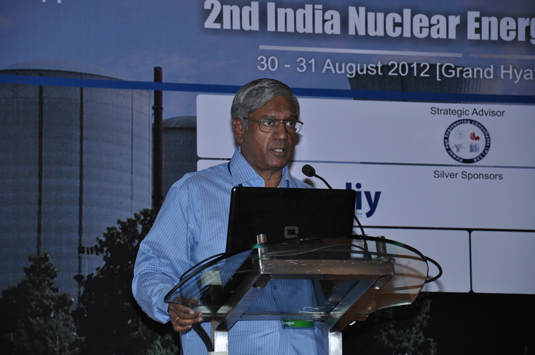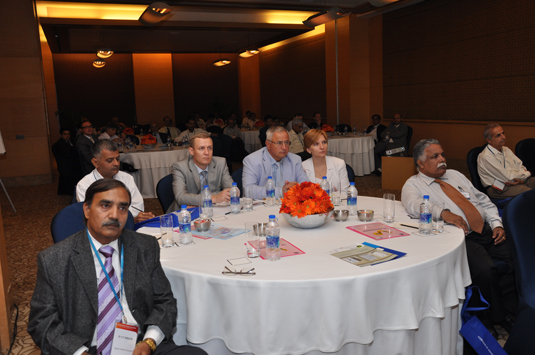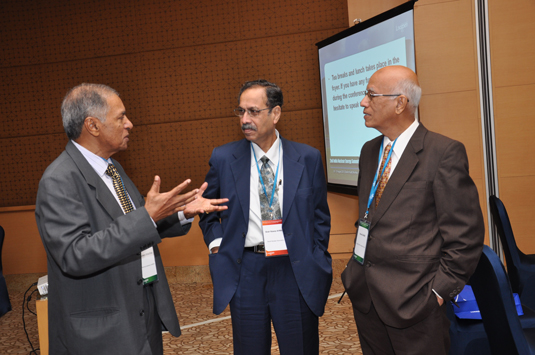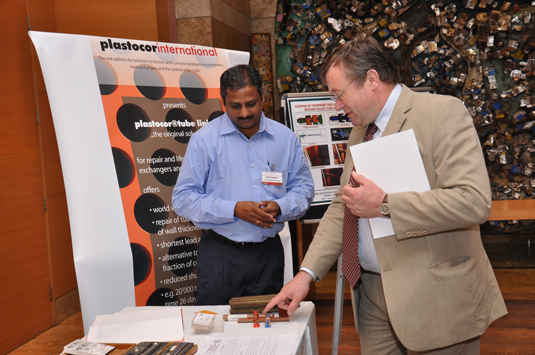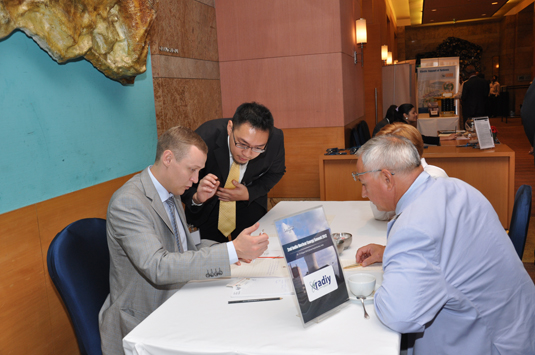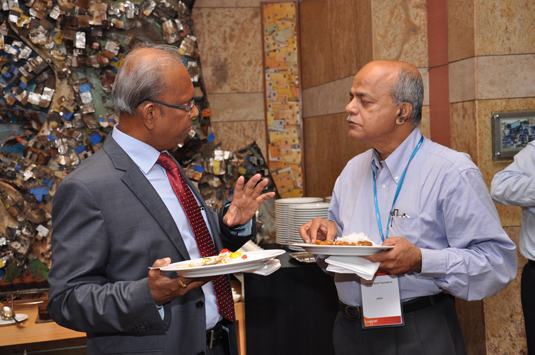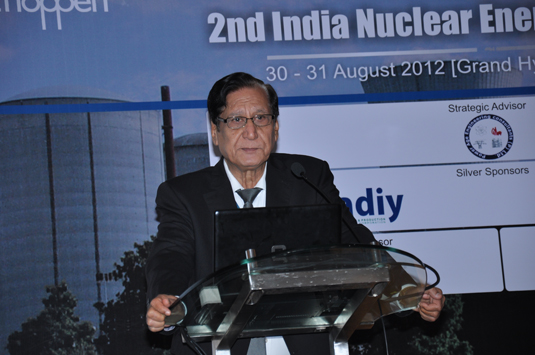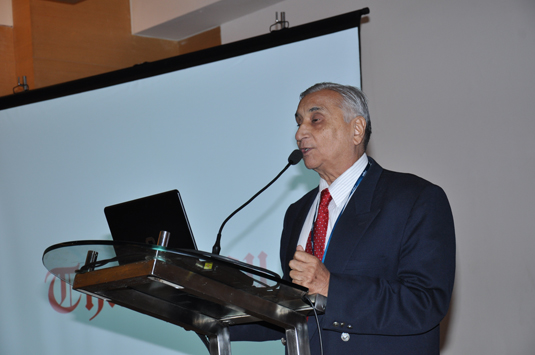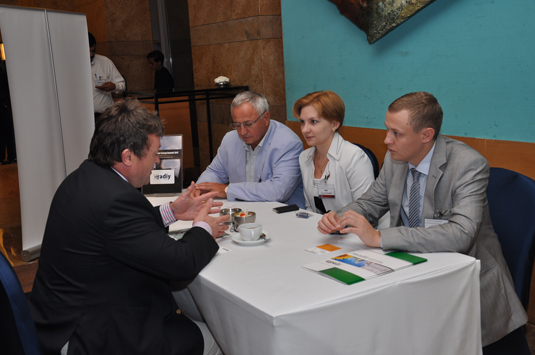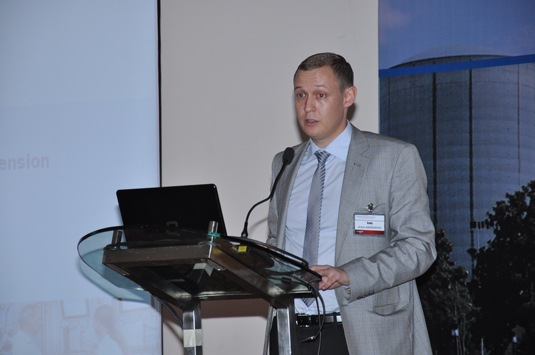2nd India Nuclear Energy Summit 2012
August 30th & 31st, 2012, Mumbai, India
India expects to have 20GW nuclear capacity by 2020 and 63GW by 2032. It aims to supply 25% of electricity from nuclear power by 2050. India has a vision of becoming a world leader in nuclear technology due to its expertise in fast reactors and thorium fuel cycle.The 2nd India Nuclear Energy Summit 2012 featured the most prominent industry leaders and government officials from across the globe providing informative and inspiring discussions pertaining to India’s current needs and their ambitious future.
The Chairman for the event Mr. A.K Anand, Former Director for the Reactor Projects Group, BARC, welcomed the delegates on Day 1 of the event. He made a brief presentation about the India Nuclear energy industry and touched upon the scope of the conference and his hopes that the summit would be a success for all who attended
Mr. O.P Goyal, Power Specialist for the GMR Group spoke about standardizing design and Engineering practices for New Nuclear Power Plants. His presentation dealt with the Importance of Design and Engineering Practices, the evolution of design and continuous improvements in the field and the importance of standardizing design and Engineering practices. He concluded his presentation by listing out the three stages of standardization and the ongoing regional and international initiatives to ensure standardization of design and Engineering practices
Mr. A.K Basu and Mr. P. Nawrotzki, of GERB Vibration Control Systems introduced their company to the gathered delegates and touched upon modern seismic protection strategies for machinery and equipment in power plants. They detailed the various parameters to describe a seismic control device, including bearing capacity, vertical/horizontal stiffness among other things. They also spoke about the experience required to find an optimum seismic device and mentioned that while there are only a few consultants who are experts, manufacturers have learnt and created optimum devices through their own experience
Another standout speaker on Day 1 was Mr. S.K Sharma, President of the Indian Nuclear Society and former chairman, Atomic Energy Regulatory Board. His presentation dealt with evolving safety policies for Nuclear Power Plants, a topic that the delegates were looking forward to. His presentation touched upon the efforts to revisit NPP safety strategies post the Fukushima tragedy last year, technical issues including defining the intensity of BDBEs, problems with power supply, inadequate design provisions to enable control in case of a potential core meltdown, shortcomings in regulatory independence and enforcement of safety standards, a lack of a suitable emergency management response team and the difficulties of communicating with the public post any sort of accident or tragedy. He concluded his presentation by speaking about the various measures being taken locally and globally to ensure safety at NPPs and ended by stating:”In the nuclear business, there is no room for complacency”
The final speaker on Day 1, Mr. A.B Ghare, and former Senior Executive Director, Nuclear Power Corporation of India Ltd. spoke about challenges in Manufacturing of Special Equipment for Nuclear Power Projects. His detailed presentation dealt with the special requirements for nuclear equipment, the schematics of different reactor types, the care that needs to be taken during manufacturing, and the manufacturing process itself. He also spoke about the various levels of Quality Assurance and what each level is for. He ended his presentation by speaking about how manufacture of Nuclear Equipment is a challenging task, but can be achieved through a combination of technology, skill and innovation
Mr. A.K Anand welcomed the delegates back on Day 2, and introduced the program for the day. He introduced Mr. S.K Mehta, consultant to the Atomic Energy Regulatory Board, and former Director, Reactor Group, BARC. Mr. Mehta spoke about the safety features currently present at the Kundankulam Nuclear Power Plant in Tamil Nadu, India. He began his presentation by outlining the lessons learnt from disasters like Chernobyl and Fukushima. He then spoke about design features that must be present in all Nuclear Power Plants. He also spoke about the inherent safety measures at the Kundankulum Power plant along with the various design features and other safety protocols put in place to prevent accidents
Speaking about Financing and Economic Issues, Mr. K.J Sebastian, Power Age Engineering Consultants spoke about the investment in the India Nuclear Program, past sources of funding, the major concerns of the investors, the Nuclear Economics, factors affecting nuclear economics, composition of Nuclear Power Tariff, pricing issues, strategies to reduce capital costs. He ended his presentation by highlighting the nuclear power growth in India and other countries, future investments in the Indian Nuclear program, and the sources of equity for Nuclear Power
Another eminent speaker on Day 2, Mr. Vedamoorthy Namasivayam, Senior Director I Consulting, Deloitte Touche Tohmatsu India Pvt. Ltd. spoke about the Opportunities and challenges for the Nuclear Sector in India. His presentation dealt with the questions of availability for energy to meet the growing needs for emerging Indian markets, the costs of supplying this energy, the security issues for the Indian energy mix, how nuclear energy stacks up against rising costs and energy security concerns, and the specific challenges beyond costs and security concerns
Mr. S.K Ghosh, former Director, NPCIL and Consulting Engineer (Nuclear Business) , spoke about safe practices in contracting for construction of New Nuclear Plants with enhanced safety and public acceptance. He provided an overview of the Indian Nuclear Power Program, the uniqueness of the Nuclear Supply chain, the presentation implementation strategy and some feedback on the same, the strategy adopted by Foreign Nuclear Reactor Vendors in India, major challenges for the supply chain in India and initiatives taken to address issues relating to nuclear supply chain in India. He concluded his presentation by speaking of the need for enhanced public acceptance and the actions taken to ensure the same
The last speaker on Day 2, Dr. M.L Joshi, former head, Health Physics Division, BARC, spoke about Radiation protection philosophies and practices adopted in the Indian Nuclear Power Program. He began by differentiating the kinds of radiation and their effects on humans. He outlined the Radiation Safety Policy, the system of Radiation Protection and the agencies involved. He also spoke about methods to track radiation, methods of contamination control, protective clothing to be worn in radiation zones and the various monitoring systems in place. He concluded his presentation by speaking about design modifications, improvements in monitoring techniques and the need for better training of personnel to ensure minimum radiological impact in the future nuclear facilities
Noppen would like to thank our sponsors, GERB Vibration Control Systems Pvt. Ltd. Onett Technologies India Pvt. Ltd. Radiy and Arudra. Noppen would also like to thank the eminent speakers and delegates for participating in the event and contributing towards making this event a success


Search an event
By Date
Industry
- Architecture & Real Estate ( 103 )
- Automotive & Manufacturing ( 68 )
- Corporate Management ( 15 )
- Culture, Tourism & Entertainment ( 46 )
- Education ( 12 )
- Energy & Natural Resources ( 83 )
- Finance ( 32 )
- Food & Agriculture ( 13 )
- Healthcare & Life Science ( 76 )
- Information Technology ( 58 )
- Infrastructure & City Expansion ( 119 )
- Retail & Consuming Goods ( 38 )
- Sports & Hospitality ( 54 )
- Transportation & Logistics ( 104 )

